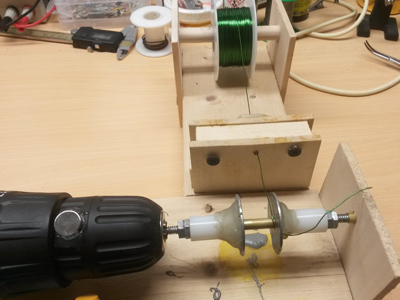How to Wind Perfect Coilgun Coils
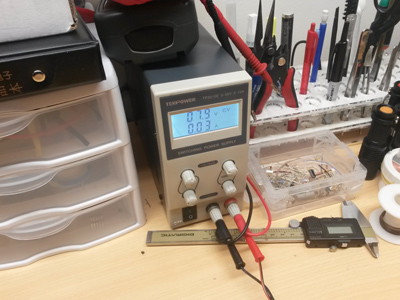 I like to power the system from my bench supply. But you could use the battery it comes with instead.
I like to power the system from my bench supply. But you could use the battery it comes with instead.I found that an input voltage of 8v works best (it's a 12v drill). This reduces the speed a bit, but it's still high enough to keep the motor controller working correctly.
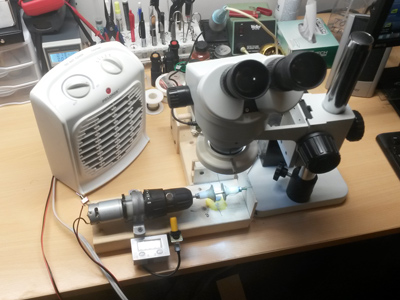 There are a couple more things you're going to need.
There are a couple more things you're going to need.1. Assuming you have regular human vision, you're going to want some magnification. You can't beat a stereo microscope, but a good magnifying glass might also work.
2. A fan. We're going to use a lot of super-glue and it produces noxious, residue-leaving vapor. Get a fan to blow that away.
3. A tube of super-glue, not the gel kind.
4. A poker of some sort, like this.
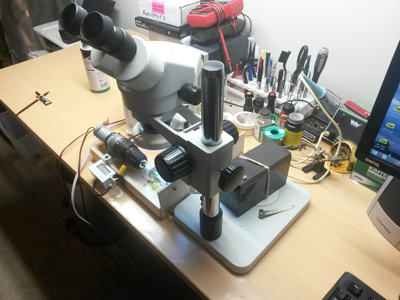 Pro-tip:
Pro-tip:You can rotate your scope base out of the way if you put something heavy like a lead-acid battery on it.
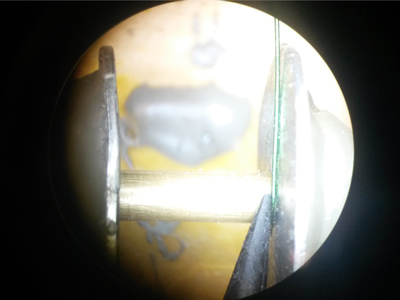 It takes 3 hands to take pictures through the microscope and also hold the poker so I'm only going to show it once.
It takes 3 hands to take pictures through the microscope and also hold the poker so I'm only going to show it once.As you wind the coil you'll need to use the poker as a guide.
It won't be visible in the following pics, but I'm using it constantly to keep everything neat and tight.
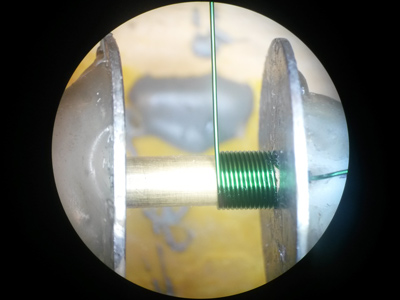 Time to start winding!
Time to start winding!Take it slow. Any mistakes will multiply as you add layers, so it's important to keep the winding as neat as possible.
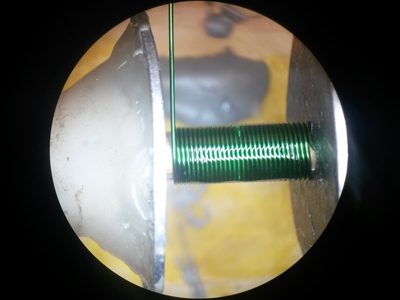 Once you're almost to the end of the layer, apply some super glue.
Once you're almost to the end of the layer, apply some super glue.The reaspon I say almost to the end, is that this will allow you to rotate the spool a couple of times to spread the glue around.
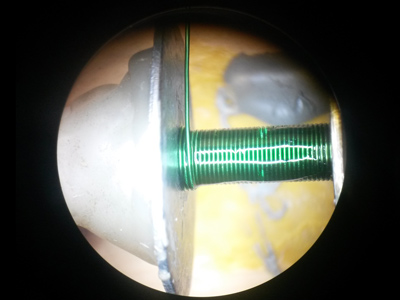 The reversal is the hardest part. You'll probably botch this on your first few coils, so don't feel bad if you do.
The reversal is the hardest part. You'll probably botch this on your first few coils, so don't feel bad if you do.What you want to do is keep the winding tight all the way until it touches the washer. At that point it will naturally ride up to the next layer. It's going to want to wander as it does this but using the poker you can keep it flat against the washer until it's made it almost all the way around.
Let the wire off the washer a little early so it can land next to the space where it jumped up from the first layer. Next to, not not on top of. This is important.




